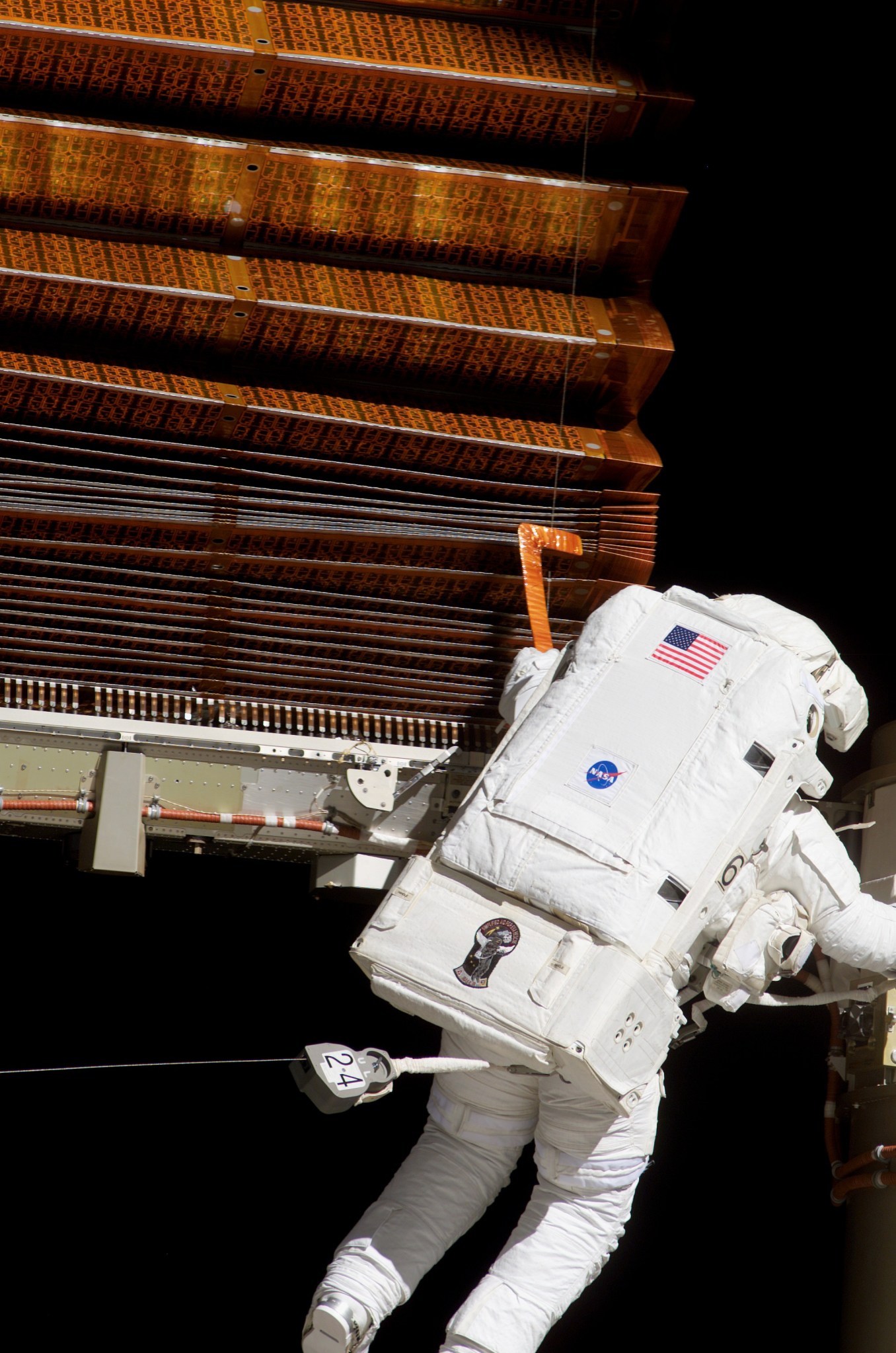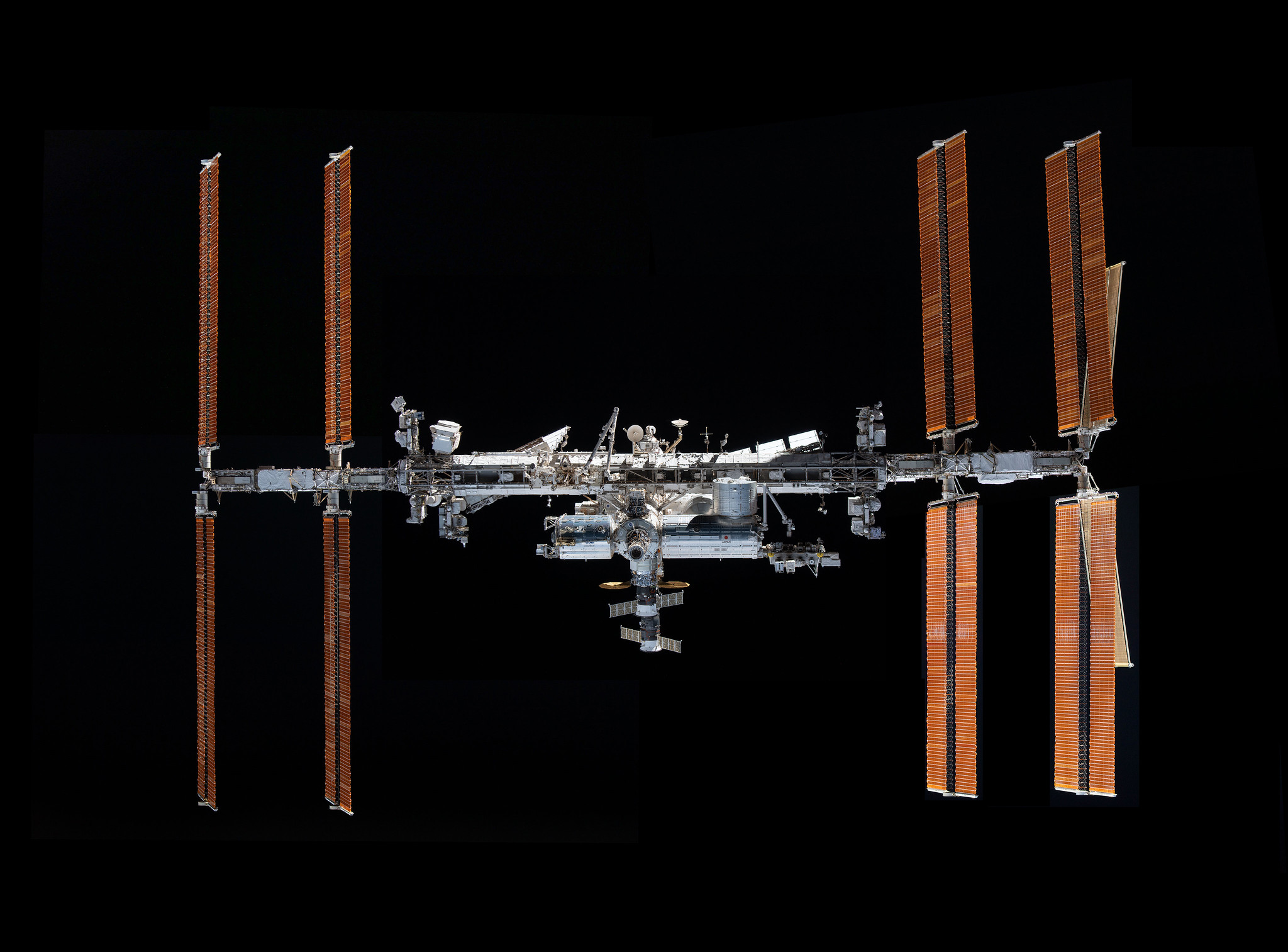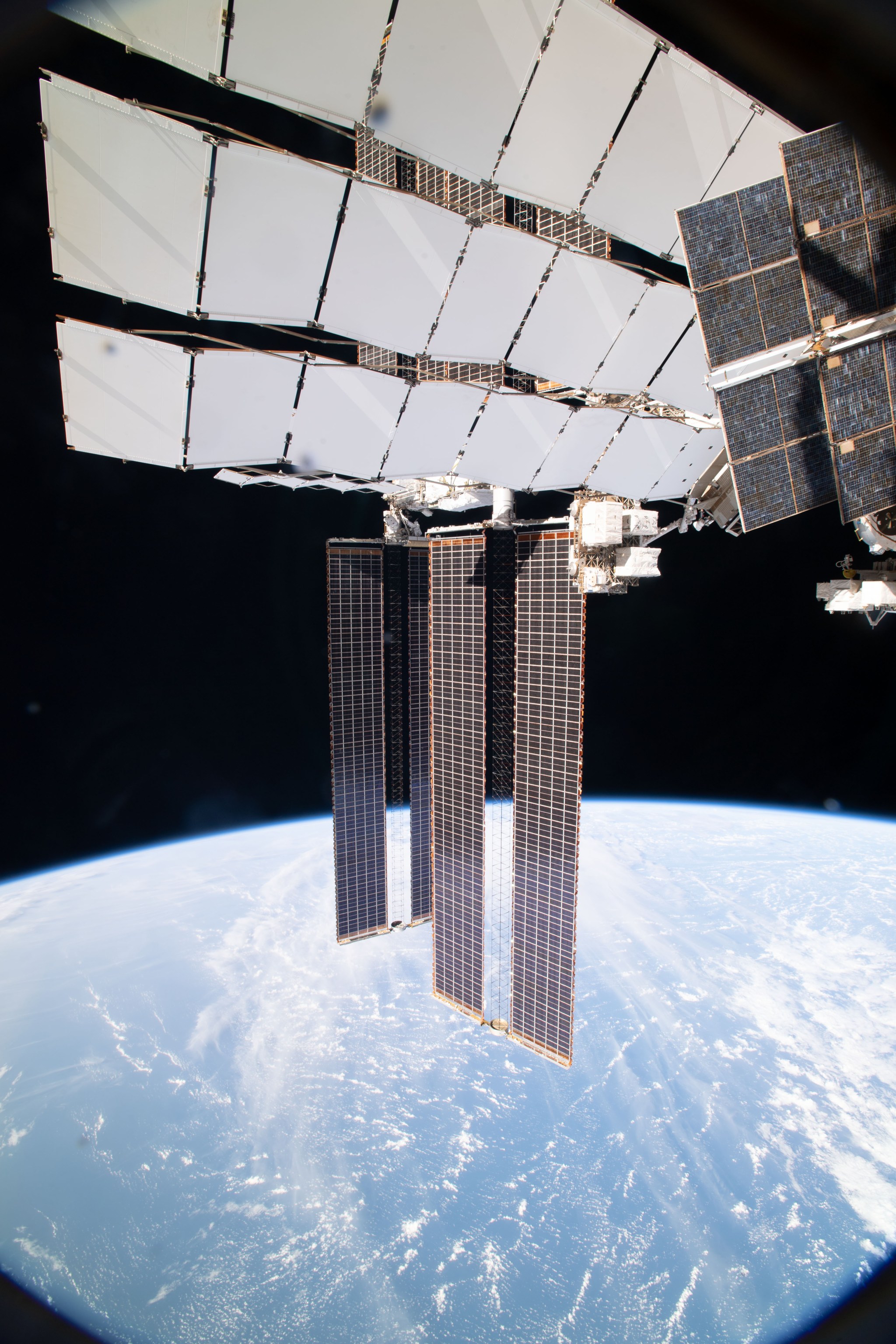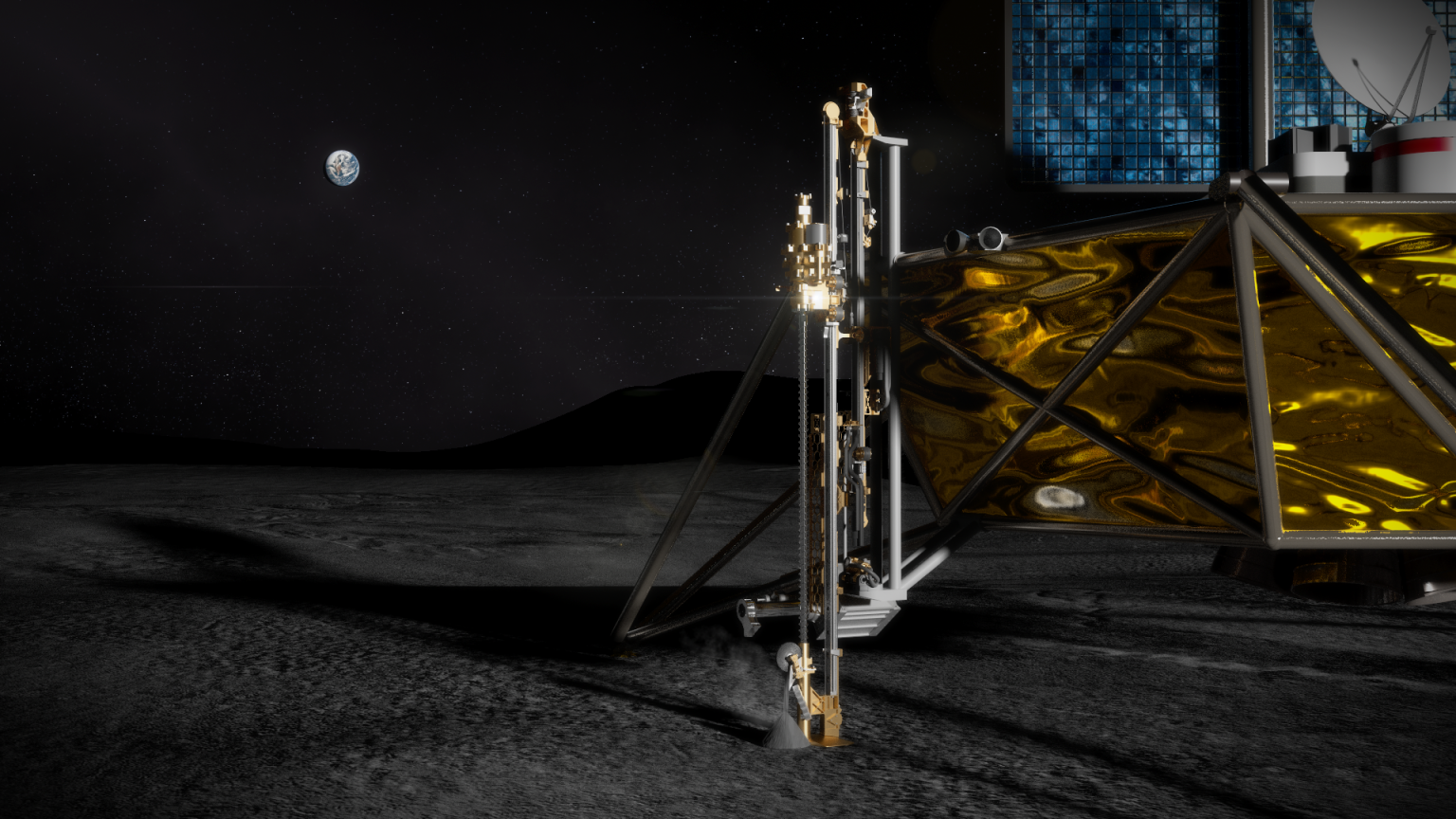Editor’s note: This feature was updated on May 23, 2024, to reflect updated information in the Infusion and Commercialization section about iROSA.
Rolling Out a Path to Future Space Travel
What Is An Impact Story?
NASA’s Space Technology Mission Directorate (STMD) develops technologies through a community of entrepreneurs, researchers, and innovators to solve the nation’s toughest challenges and enable future NASA and commercial missions to the Moon, Mars, and beyond. Each impact story summarizes an STMD-enabled technology’s journey. They follow STMD-funded technologies from idea to use – illustrating how support from NASA drives innovation, development, demonstration, and commercialization of new technologies.
The Technology
Standard solar arrays in space can be expensive, heavy, and often very complex to operate.
Roll-Out Solar Arrays (ROSA) are an alternative to existing solar array technologies. These arrays are a compact design, more affordable, and offer autonomous capabilities that can enhance a wide spectrum of scientific and commercial missions, from low-Earth orbit all the way to interplanetary travel. ROSAs recently installed aboard the International Space Station provide additional power to augment the existing power supply, supporting more cutting-edge scientific research. ROSAs are also powering deep-space exploration and scientific missions, such as the Double Asteroid Redirection Test and Gateway’s Power and Propulsion Element. Additionally, ROSA’s design has been integrated into commercial satellites.
ROSA is a technology of Redwire Space, originally developed by Deployable Space Systems (DSS) with the support from NASA STMD. Since 2009, STMD has funded parts of DSS’s journey, from conceptualizing ROSA to its development, culminating in successful technology demonstrations, operational mission use, and other cutting-edge potential applications. DSS was acquired by Redwire in 2021, continuing ROSA’s infusion into both NASA and commercial missions.
The Challenge
You come up with a simple concept, but to get that to space, riding along that controlled explosion is what drives your design.

Ken Steele
Redwire’s Vice President of Business Development
The Sun is the largest power source in space, producing more power per second than humanity has consumed in the past 70 years. Most spacecraft use solar panels to harness the Sun’s continuous energy and provide power for various needs such as thermal and payload operations. However, solar panel designs are built around two key factors: size and reliability, which have been difficult to optimize. Size of the panels affects the cost of launch, while long-term reliability is needed to withstand the harsh environment of space, including temperature swings, radiation, and micrometeoroid impacts. Since standard designs yield solar panels that are rigid, large, heavy, and complex to operate, STMD recognized how ROSA could improve solar panel design.
The Advantage

Size: ROSA is compact and rolls up like a carpet to be stowed for launch, making it more easily transportable while still maintaining a large surface area. Additionally, ROSAs are scalable and modular as DSS created a flexible design that could meet various mission requirements. ROSAs can be scaled down for small satellite applications or made incredibly large for deep space missions.
Deployment: As Matt LaPointe, Redwire’s iROSA (ISS ROSA) technical director, said, they were looking for a simple composite boom deployment system. Large solar arrays conventionally use a motor deployment system, requiring human interaction and huge electrical systems. In comparison, ROSA is autonomous and uses strain energy in composite booms – similar to stored energy in a spring – to self-deploy. Since a higher number of components affect reliability, using composite booms instead drastically reduces the likelihood of mechanisms jamming or motors failing to prevent deployment.
Performance: Despite being smaller than conventional solar arrays, ROSAs are high-performing, capable of producing more than 30 kilowatts per panel, depending on the size. ROSAs use highly efficient solar cells, and future iterations will even experiment with concentrators to boost its performance. Furthermore, the composite booms provide structural rigidity, capable of withstanding a dynamic environment, a range of frequencies, and debris or micrometeoroid collisions, providing reliability for long-duration missions.
Technology Development
2009 – 2013: Early-Stage Funding
Following its first Air Force Small Business Innovation Research (SBIR) award, STMD’s SBIR and Small Business Technology Transfer (STTR) program “kick-started” ROSA and were crucial in bringing the technology to fruition. In 2009, SBIR awarded the DSS team a Phase I and Phase II award, combined total of nearly $850,000, for ROSA research and development. In the next few years, DSS secured nearly 20 additional NASA SBIR awards to further advance ROSA.
2014: Technology Maturation and demonstration
STMD’s Game Changing Development program advanced ROSA from concept, shaped through several successful SBIRs, to development of a functional prototype. Shortly after, STMD’s Technology Demonstration Missions supported a ground demonstration. The ground demonstration proved that ROSA, compared to the state-of-the-art arrays at that time, had higher deployment strength, operating voltage, and more power per wing.
2017: Flight Demonstration
DSS partnered with the Air Force Research Lab (AFRL) to conduct a successful flight demonstration on the space station in June 2017, ultimately reducing implementation risks and opening the door for infusion into missions. During the in-space demo, ROSA also demonstrated three types of compatible solar cells.
2017-2019: Commercialization Growth
Various NASA STMD funding opportunities allowed DSS to establish scientific, technical, and commercial merit while continuously improving ROSA’s quality. In 2019, DSS gained an additional funding opportunity through NASA SBIR/STTR Civilian Commercialization Readiness Pilot Program (CCRPP), focused on accelerating technology towards infusion or commercialization.
“Early funding was the catalyst that allowed former DSS President Brian Spence to take his idea and not only complete a demonstration but mature the technology up to TRL 8/9 and champion that technology forward,” said Ken Steele.
Technology Readiness Levels (TRLs) refer to the maturity level of a particular technology based on a set of parameters. TRL 8 technology has been tested and is ready for implementation into existing systems, while TRL 9 technology has been proven through successful mission operations.
Infusion And Commercialization
Low-Earth Orbit Human Exploration Infusion: ISS Power Augmentation Program
The ISS Power Augmentation program sought innovative solutions for power generation to supplement the legacy arrays. On June 20, 2021, NASA astronauts completed the installation of two new iROSAs. The iROSAs are rolled out in front of the legacy arrays and can produce excess of 28 kilowatts of power at beginning of life. Each iROSA is nearly half the size of the legacy arrays, allowing the unshaded portions of the original arrays to continue producing a combined power of about 95kW. With all the six iROSAs installed, the station’s power generation increased to a combined total of more than 250 kW, more than a 30% increase. In 2023, in response to payload and commercial element power projections, along with chance of degradation due to micrometeoroid damage, the ISS requested two additional iROSAs, adding about 15 kW more to the total power once installed!
Overall installing the IROSAs on the ISS reset the clock 20 years on the solar arrays and will enable the ISS to continue to provide sufficient power to current and future payloads as well as our commercial element partners through ISS end of life.

Michael Salopek
ISS Vehicle Office Program Project Manager
Lunar Exploration Infusion: Gateway Power and Propulsion Element
Gateway will be an orbiting outpost, crucial for NASA’s Artemis program, functioning as a way station between Earth, the Moon, and deeper space destinations. It will be a destination for new scientific investigations, astronaut expeditions, and lunar experiences that will be critical in preparing for the first crewed mission to Mars. Gateway’s Power and Propulsion Element (PPE) is a solar electric propulsion spacecraft that will provide power, high-speed communications, orientation control, and the capability to move Gateway to different lunar orbits. The PPE will be powered entirely by two ROSAs, generating 60kW.
Deep Space Exploration Infusion: Double Asteroid Redirection Test (DART)
DART is a planetary defense driven test of technologies for preventing a hazardous asteroid from impacting Earth. DART will deliberately collide with a target asteroid, which poses no threat to Earth, to change its speed and path. The DART spacecraft’s solar panels needed to be low-cost and low mass while being capable of powering the propulsion system, and ROSA was selected to accomplish these goals. In addition, some solar cells were replaced with advanced solar cells and concentrators to test their viability for missions to the outer planets where the amount of sunlight is very low. Concentrators will provide heat to improve solar cell performance in the low light and low temperature conditions in deep space. Moreover, these concentrators can replace numerous solar cells, reducing the cost of inner solar system missions while maintaining performance. On Nov. 24, 2021, DART launched with two ROSAs with autonomous deployment capabilities, marking the first planetary mission powered by ROSAs – in this case, on a journey through deep space to encounter the asteroid system at almost seven million miles away.
Commercial Infusion: Maxar Technologies
Maxar Technologies infused modular versions of ROSA into commercial geostationary satellite products.
Contact Swati Patel to share how NASA’s Space Technology Mission Directorate has supported your technology!





























